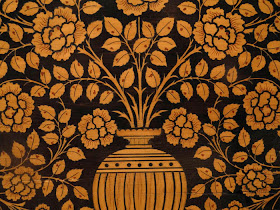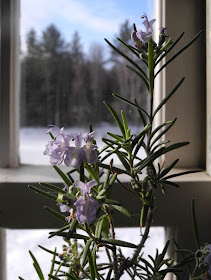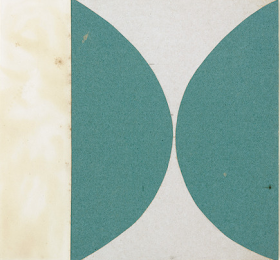Sunset on the Sea, 1872, oil on canvas, 28 x 41 1/8 in.
Sometimes we are reawakened to an artist's work by seeing it in a new context, which scrubs our eyes clean and opens a space in our mind. This happened to me during my recent visit to the Metropolitan Museum of Art's new
American Wing. In a gallery devoted to 19th century landscape painters, one stood out for me in a startling way: John Frederick Kensett. It's as though I saw a completely new painter, one who looked at the world with a sense of its essential nature, and who left the extraneous behind. A painting: sea and sky, the light of sunset gently touching the waves, the only diagonals barely traced in the upper sky. A painting full of light, but not drama; an everyday glory.
Eaton's Neck, Long Island, 1872; oil on canvas, 18 x 36 in.
A curve of beach and hillock sweep into the space of sky and sea, each element in perfect balance.
Eaton's Neck, detail
Kensett's touch is restrained yet visible, alive in its descriptive power.
Twilight on the Sound, Darien Connecticut, 1872; oil on canvas, 11 1/2 x 24 1/2 in.
Another still sunset, with elements separated by treed masses, a human trace in the floating boat.
Passing Off of the Storm, 1872; oil on canvas, 11 3/8 x 24 1/2 in.
This painting is a marvel of light and air. Clouds are reflected in water of nearly the same hue, yet each is itself: the water transparent and reflective, the clouds indefinite masses. Three simple rectangles make up the composition: water, dark clouds, and the bright band above them.
Passing Off of the Storm, detail.
Small details of boats, a fisherman, a bird taking flight, are added with quick strokes of the brush; they seem to hardly be there at all, just brief touches on the landscape.
A Foggy Sky, 1872; oil on canvas, 30 1/2 x 45 3/4 in.
Salt Meadow in October, 1872; oil on canvas, 18 x 30 in.
I photographed the first four paintings above at the museum, then went to the Met's
Kensett website page to
see if I could find additional works that fit the feeling I had that
day of a painter using minimal means to express a great deal. I found the two paintings above, which are not on view in the galleries, but in the study collection, so I will try to see them on my next trip. In preparation for writing this post, I pulled my Kensett book,
John Frederick Kensett: An American Master, from my studio bookshelf. It wasn't until then that I realized that all the work I'd been so drawn to were part of what is known as Kensett's "Last Summer's Work", a group of 39 paintings that he completed during a three month period in 1872, mainly around his Darien, Connecticut studio on Contentment Island, an amazing achievement. Tragically, Kensett died a few months later, and in 1874 his brother gave this group of paintings to the Metropolitan Museum, many of which are still in the museum's collection. I can't help but wonder how his work would have developed if he had lived; would he have continued to be inspired by the spare landscape on the Long Island Sound, and emptied his paintings even more of incident? In his Last Summer's Work, Kensett has left us paintings which are quietly attentive to specifics of light and landscape, and through that very sensitive attention transcends them.


















































